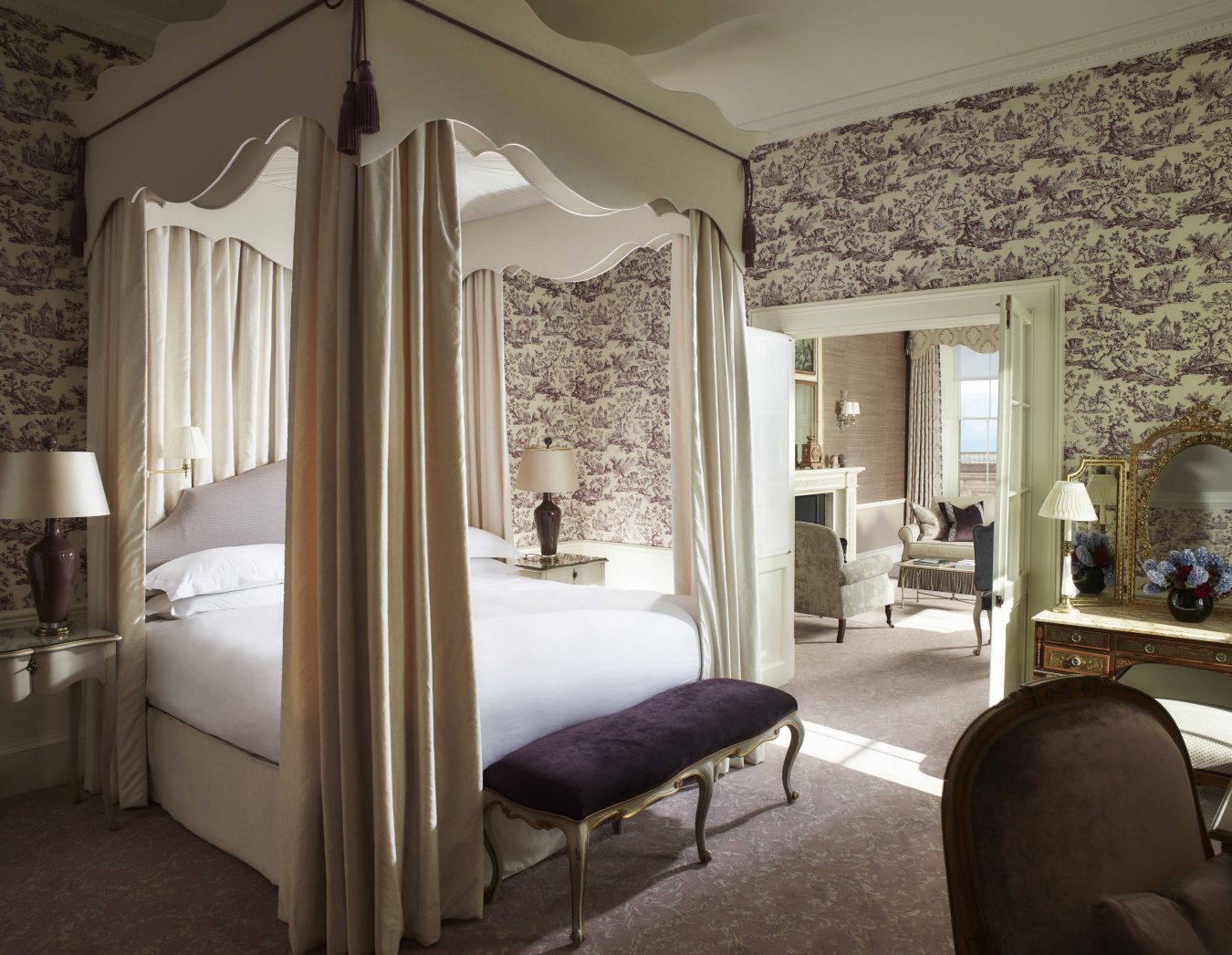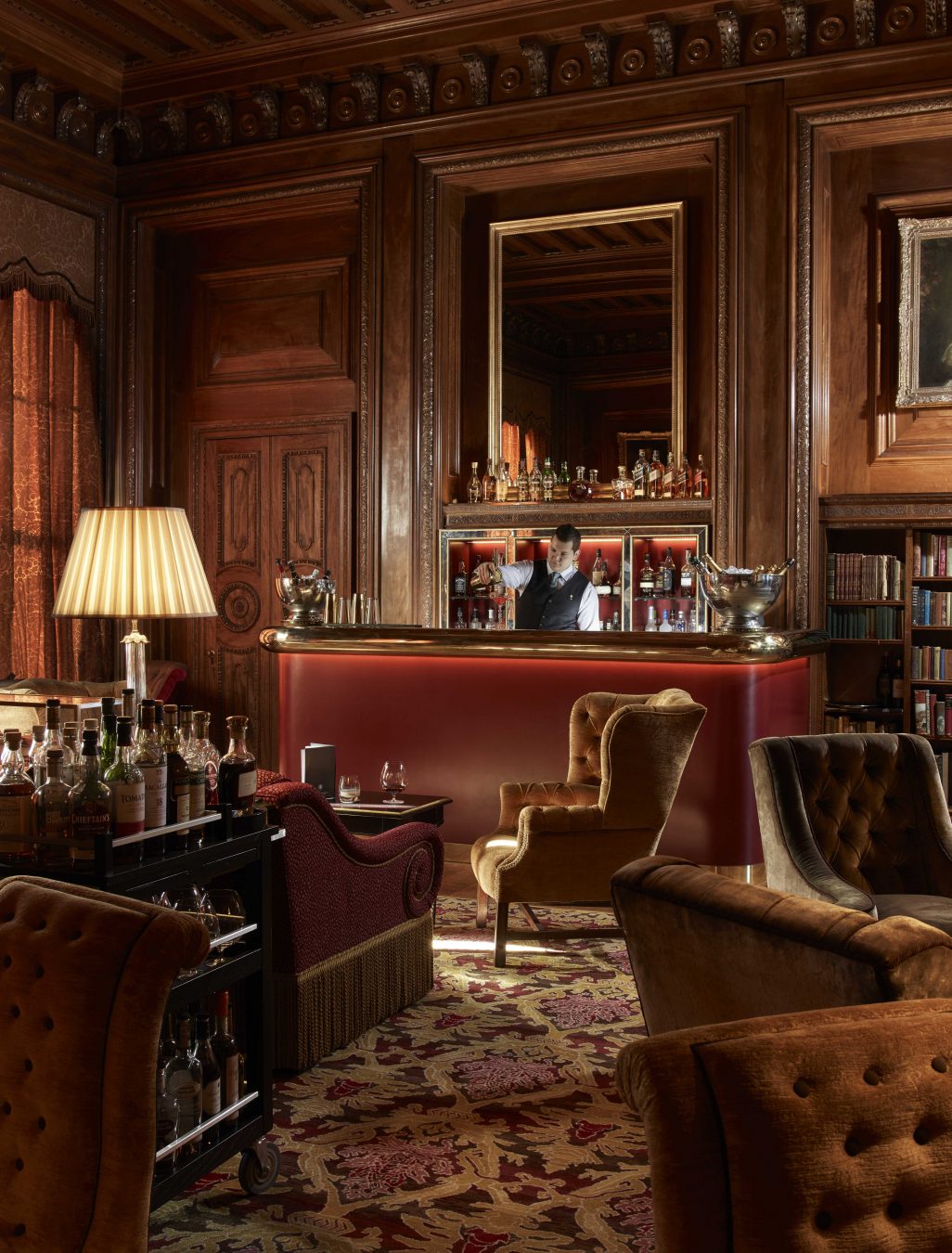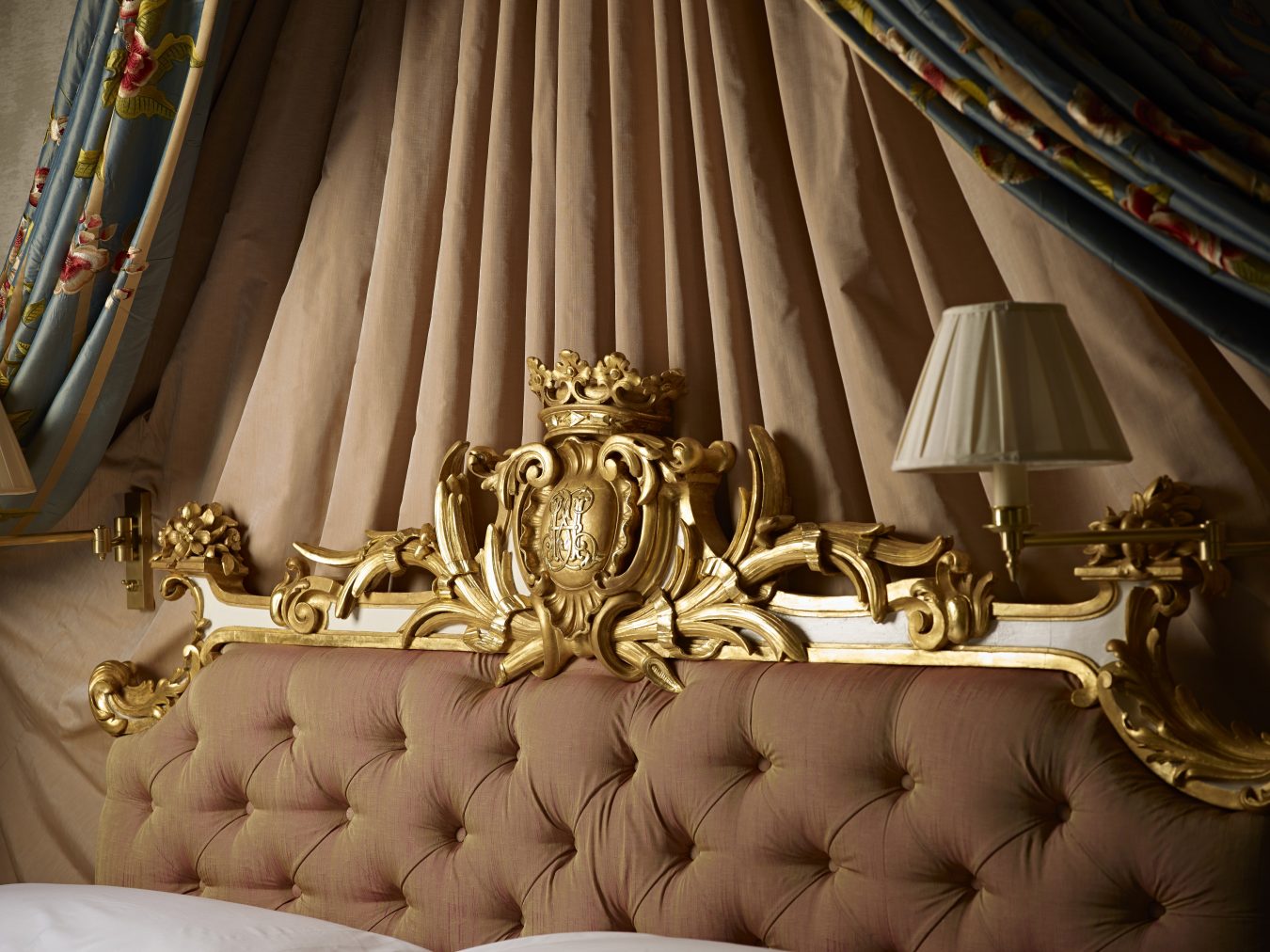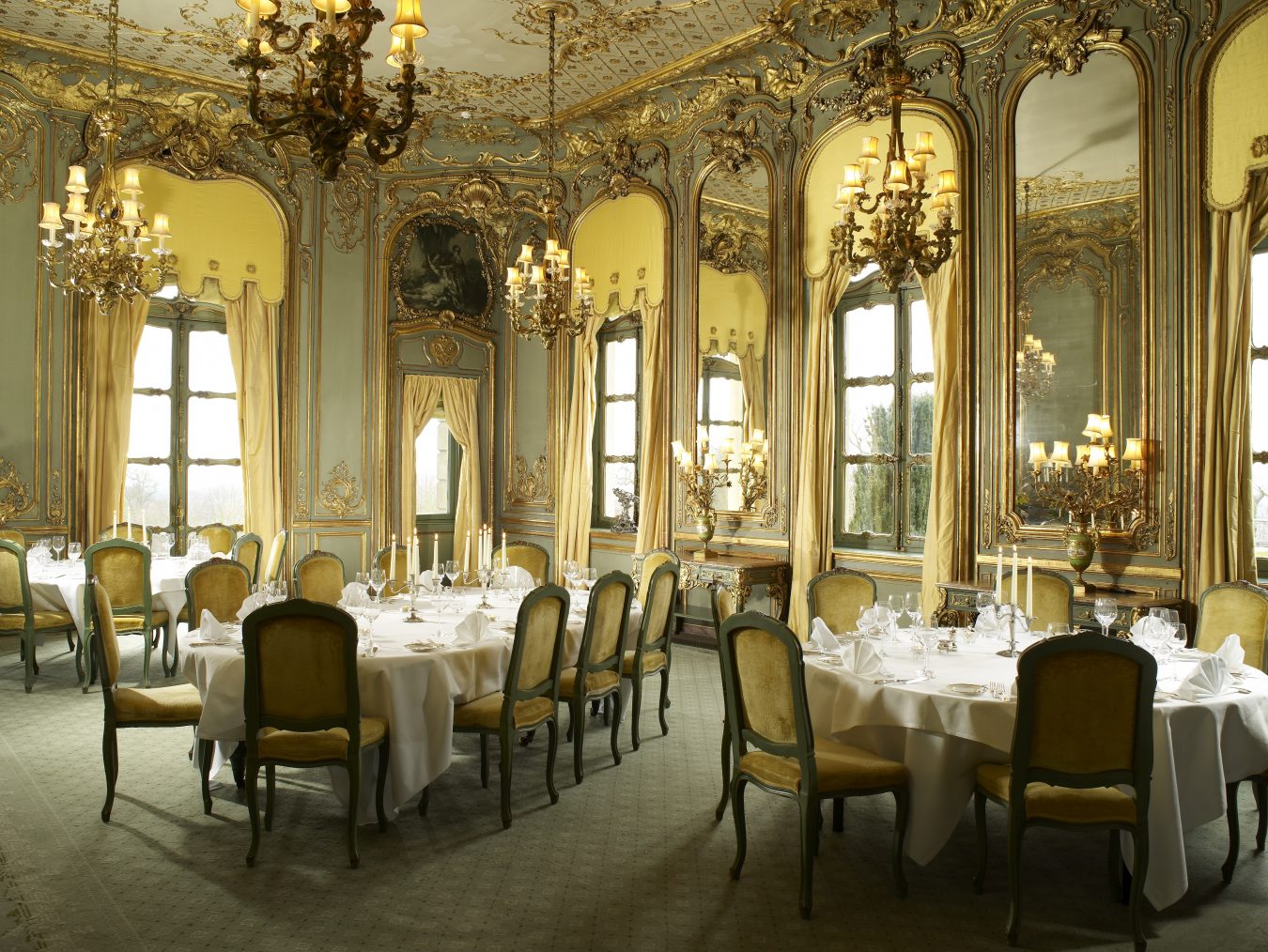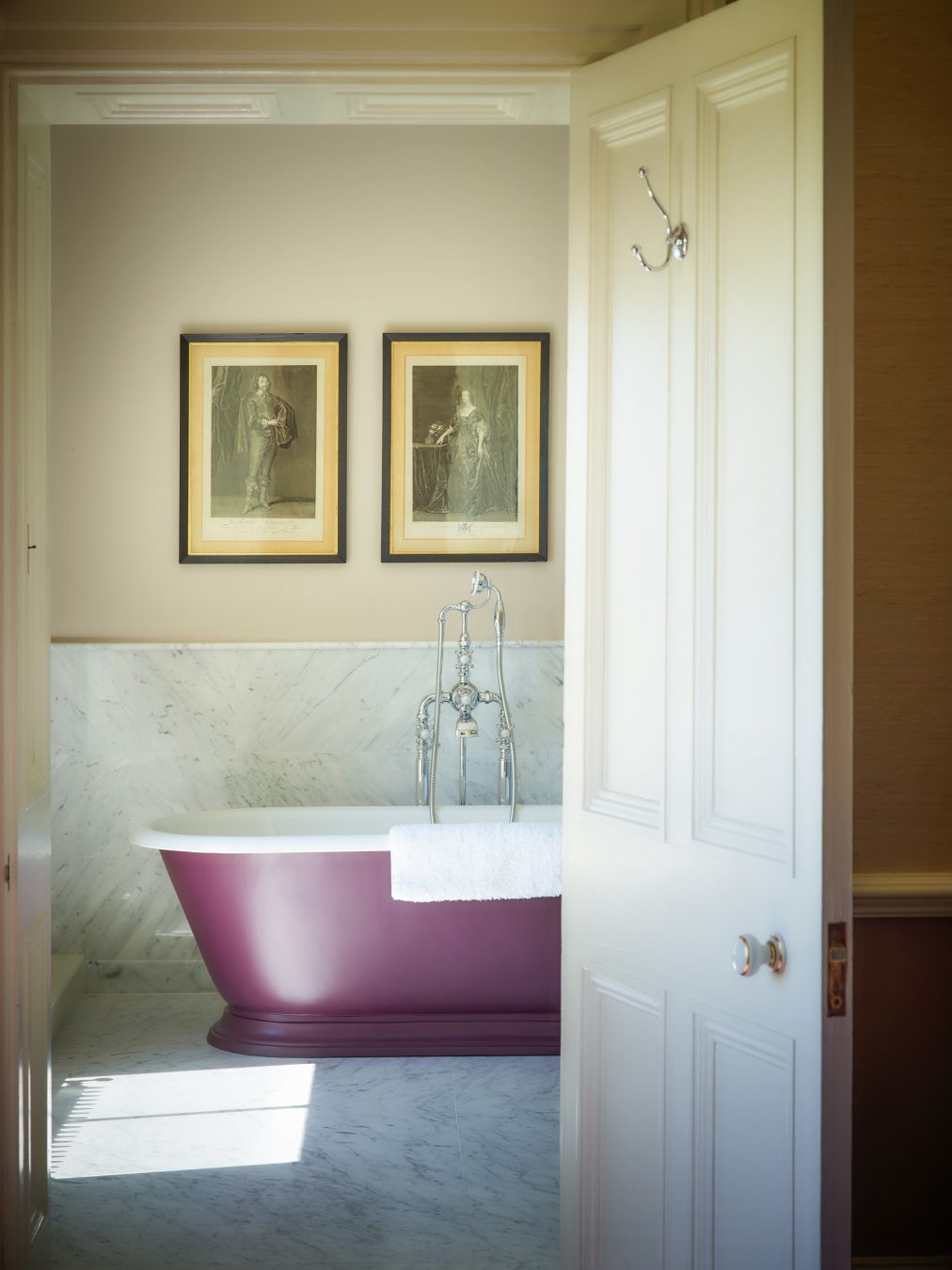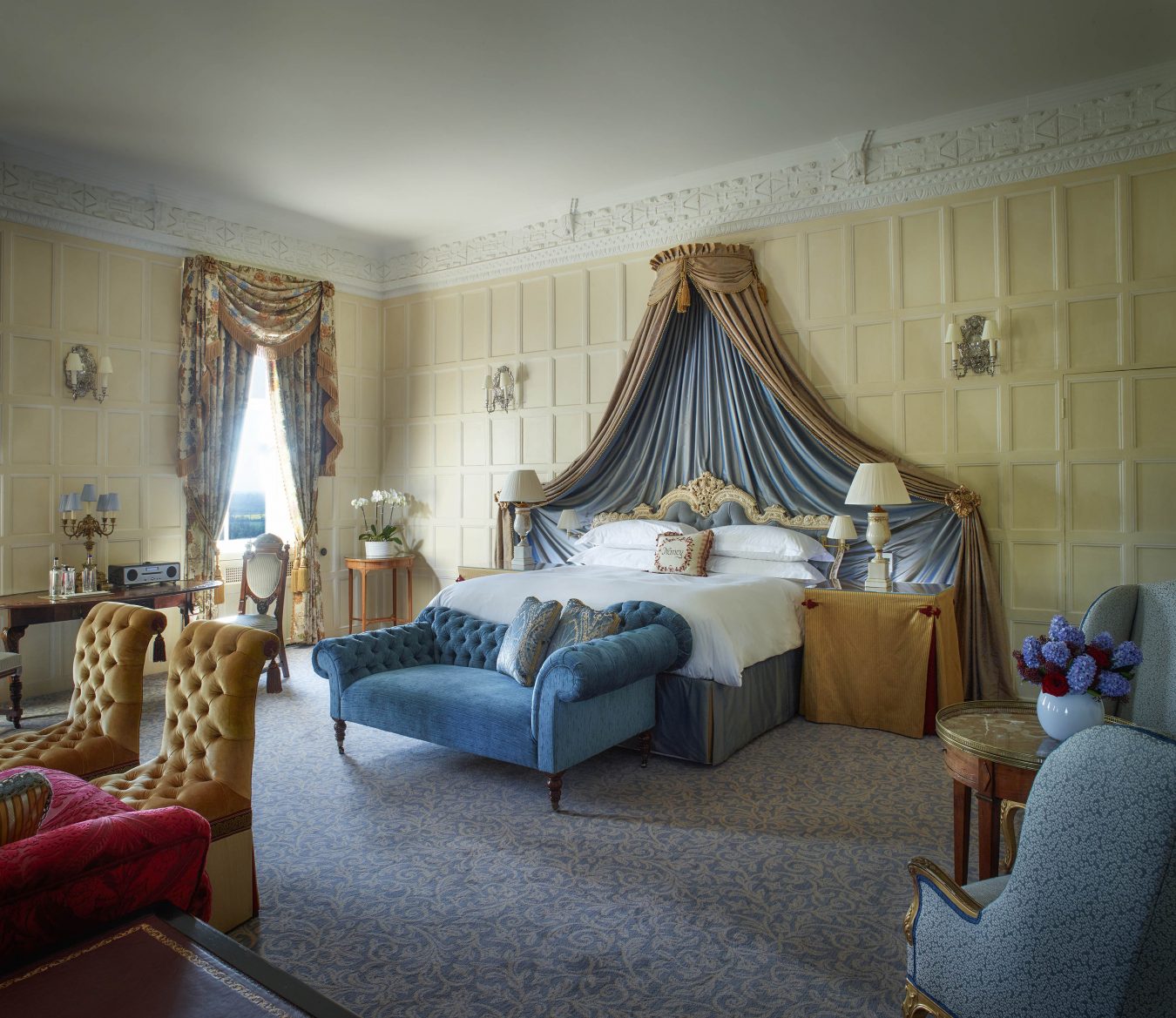Travelling down the lime tree avenue leading to Cliveden House, one cannot help but feel like royalty. Passing the Fountain of Love, a Birth of Venus-like grand Carrera marble statue, the car turns onto the final stretch along the Grand Avenue driveway to the storied English country estate in Berkshire. It is a path that has been frequented by every British monarch since George I, with the exception of Queen Victoria (who preferred travel here by boat along the River Thames). This past May, the Grand Avenue’s place in British history was cemented by a new member of the royal family as she made her way from the Italianate mansion estate to Windsor Castle. Accompanied by her mother, Meghan Markle departed Cliveden House in a 1950 Rolls Royce Phantom en route to her wedding to marry Prince Harry, Duke of Sussex.
Situated five miles upriver from Windsor Castle and a 45-minute drive west of London, Cliveden House sits on a ridge in the Chiltern Hills, towering over its 376 acres of parkland and formal gardens. The 48-bedroom Relais & Châteaux hotel and grounds are owned by the National Trust, the United Kingdom’s historical conservation organization; as a Grade 1-listed heritage property, Cliveden House requires the utmost care and time for refurbishments to preserve the character of its historic bones.
![]()
Walking into the main house is akin to walking into another era, with original Orkney tapestries hanging in the same position for more than 300 years, and an antique suit of armour in standing position next to the concierge desk. Walk up the mahogany staircase and be reminded of the manor’s former residents, with carved figures honouring previous owners. Pause on the first floor to find the butler’s pantry, stocked full of wine, fruit, tea, and biscuits for guests to enjoy.
Up the winding staircase to the second floor is the feminine Blakeney suite, with windows facing the most dramatic of gardens: the six-acre Parterre. An elaborate geometric pattern of 16 triangular flower beds bordered by a sweeping semi-circle bed at the north end of the lawn was designed in 1849 by head gardener John Fleming, who became horticulturally famous for his work at Cliveden. The Parterre can also be seen from the deep plum-coloured soaker tub at the centre of the gleaming marble bathroom, which could easily pass for a spare bedroom in the average London flat. This regal suite features original artwork, rich cranberry-hued accents in velvet and brocade, and cozy seating around a marble wood-burning fireplace—which has security measures in place to avoid another catastrophe.
The current Cliveden House is actually the third version of the estate, with the original destroyed by a fire in 1795 and another blaze destroying its replacement in 1849 (despite the efforts of Queen Victoria, who sent fire engines here after spotting smoke from Windsor Castle). The original Cliveden House was built in 1666 by George Villiers, 2nd Duke of Buckingham, for his mistress Anna Maria Talbot. Villiers’s flamboyancy was notorious, while Talbot was known for her striking features and her power over men. Married to the Earl of Shrewsbury, Talbot and her affairs became increasingly public, forcing her husband to challenge her most powerful lover to a duel. It would prove fatal for the Earl, with Talbot and Villiers moving to Cliveden House shortly thereafter.
While Talbot inspired the construction of the original Cliveden House, it is Nancy Astor who made it what it is today. Born Nancy Langhorne in Virginia, the divorcee and her second husband, Waldorf Astor, received Cliveden House as a wedding gift. Waldorf’s father had purchased the estate in 1893 for $1.25 million.
Waldorf remodelled many rooms in the home, including enlarging the Great Hall (now the André Garrett Restaurant), commissioning the Fountain of Love, and importing the pale blue and gilded French Dining Room from the home of Madame de Pompadour, Louis XV’s chief mistress. The Rococo-style room, along with its furniture, was reinstalled by Waldorf and is painstakingly preserved, with the present-day concierge whispering that it takes months to touch up even a scuff of the gold-leaf paint. It is here the Waldorfs hosted a rotating door of socialites and politicians that became known as the Cliveden Set.
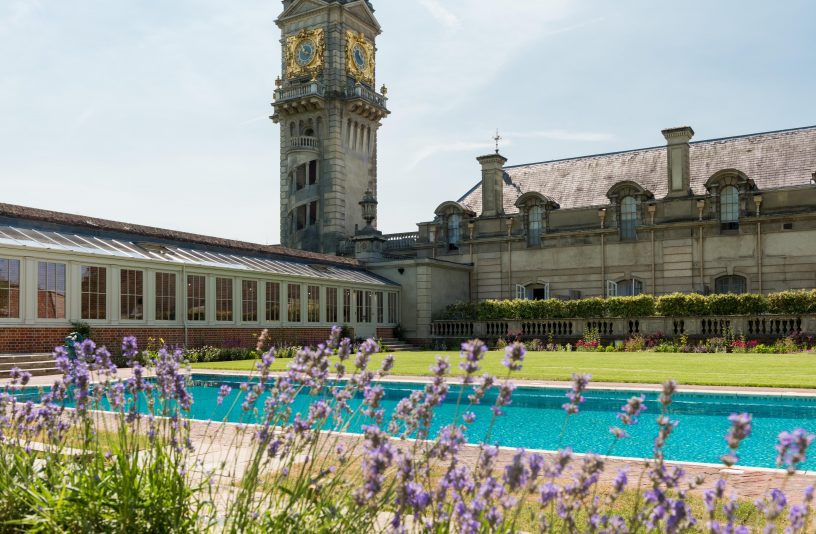
Around the very table that now welcomes guests for private teas and weddings, Nancy entertained personalities including Winston Churchill, Charlie Chaplin, and George Bernard Shaw. When dining at Cliveden in modern day, it’s easy to imagine the luxurious experience enjoyed by these guests. To start, perhaps a Champagne cocktail in the cedar-panelled library, which the Astors called the “cigar box,” over stories recounted by the head bartender; to follow, an eight-course tasting menu including a melt-in-your-mouth foie gras au torchon and roasted haunch of local wild venison by Michelin-starred chef André Garrett.
More than the ultimate society hostess, Nancy became, in 1919, the first female member of parliament to take her seat in the House of Commons. She held the seat for 26 years. Her portrait hangs next to the fireplace in the lobby, and her suite upstairs, with its large terrace and views of the garden, is one of Cliveden’s most beautiful.
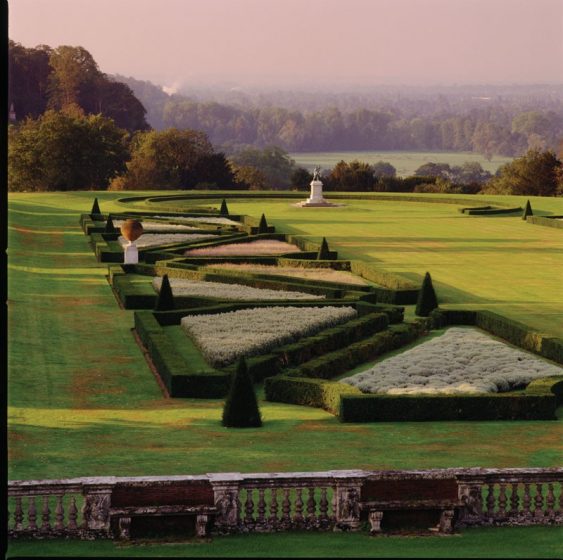
Continuing the tradition of entertainment and socializing, Bill Astor, the first son of Nancy and Waldorf, installed what would become the country’s only National Trust-listed pool. On a balmy evening in July 1961, a group of dinner party guests took a stroll of the grounds to find 19-year-old showgirl Christine Keeler emerging from the water nude. Keeler was visiting Cliveden as a friend of the osteopath Stephen Ward; a friend of Bill’s, Ward was renting the estate’s Spring Cottage, which was originally built to host Queen Victoria for tea. That summer night, Keeler caught the eye of a married John Profumo, secretary of state for war under British Prime Minister Harold Macmillan. The encounter between them sparked an affair that forced the secretary’s resignation and brought down Macmillan’s conservative government. Bill died shortly after, and the Astors moved out of Cliveden; the National Trust has managed the estate since 1966, when it was made open to the public.
Ward’s sketches of Keeler and Prince Philip, Duke of Edinburgh hang discreetly on the walls of Cliveden’s lower levels. The drawing of Keeler is believed to be the one that Queen Elizabeth discovers in season two of Netflix’s royal television drama The Crown—a fact Cliveden staff would neither confirm nor deny.
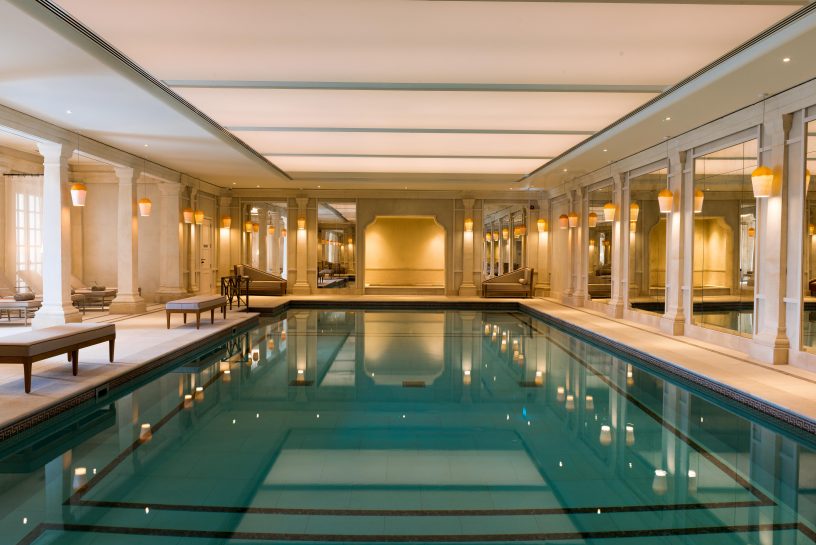
While many visitors today opt to borrow a pair of Hunter wellies and explore the grounds, a more relaxing option is to visit The Cliveden Spa, which reopened in 2017 following a multi-million-pound refurbishment. Anna Maria Talbot and Nancy Astor inspired a bespoke Cliveden body collection by luxury British skin care line Oskia; facials featuring the brand’s cult Renaissance products are also available, as are bespoke treatments by Sarah Chapman, whose clients include Markle (now carrying the Duchess of Sussex title) and unofficial British royal Victoria Beckham.
Following treatments and a dip in the indoor pool, one could take lunch in the calming spa restaurant or lounge in the light-filled glass atrium overlooking the Charles Barry clocktower. End the day lightly dozing off in a plush robe, daydreaming of the history and scandal contained within this grand country estate.
Find your next Travel destination.

